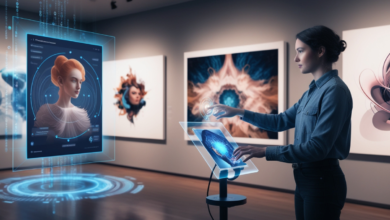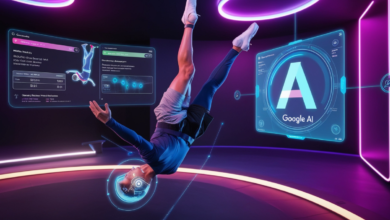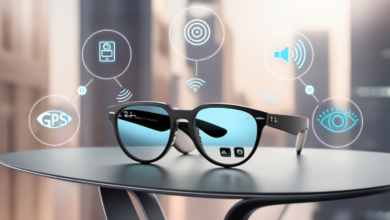
Catholic Saints Recreation Face AI. The intersection of technology and religion is giving fascinating new possibilities to the study of religion. In the past couple of years, the faces of Catholic saints, including Jesus Christ himself, have been rendered 3D with the help of artificial intelligence (AI) by researchers and scholars.
Such a novel approach to the use of AI technology offers an insight into the reality of these ancient figures, which was otherwise unnoticeable. In this paper, we look at how AI is being applied to happily animate the faces of saints, beautify their images, and help expand the knowledge of faith, religion, and evolution in history.
What Are Catholic Saints?
The Importance of Saints in Catholicism
In the teachings of Catholicism, the lives of the saints are regarded as essential and integral when it comes to the Catholic faith. They are the mediators between God and mankind and the bond between mortals and the holy.
Saints are viewed as members of the Church who lived lives of virtue and are to be emulated due to their positive attributes. The church has created a formal system of recognition to honor these people, and that is canonization; this makes a person a saint.
These individuals were present in art, literature, and religious images, and their images and depictions constituted the topics of prayer, worship, and loyalty for their followers.
The Canonization Process
Canonization remains a rather complicated process that encompasses an in-depth scrutiny of the activities and life of the person.
The Roman Catholic Church seeks evidence of virtue, miracles, and contribution to the community. Following the confirmation of sainthood, the faithful saints are used as witnesses of their creed, and their pictures are used in churches and houses as remembrance for worship.
Saints and Their Spiritual Significance
Saints are regarded as intercessors between God and Man, which is why believers seek their intervention and offer prayers to them.
In the Catholic faith, saints are often called upon for assistance, specifically during difficult situations when strength, guidance, and protection are solicited. Artists, even AI today, sculpt, paint, and recreate these spiritually significant snapshots enabling the believers build their faith in the saint.
The Role of Art in Depicting Saints
Traditional Depictions of Saints
Culturally, it is artists who have contributed significantly to the image of saints as it is known to Catholics. From the Middle Ages to the Renaissance such saints were painted and sculpted into great works where their beauty was sometimes exaggerated in order to emphasize their sanctity.
Handed down and adopted into Christian culture, these images became traditional ones. They were, however, not true. Some of the saints did not exist in real life.
The Artistic Representation of Jesus and Mary
Of all the religious figures, it may be recommended that both Jesus Christ and Mary be regarded as the most iconic. For many centuries, numerous artists have created likenesses of Jesus and Mary, each attempting to put his or her own angle into the work.
Such depictions have transformed the images of believers through art throughout the era, from Renaissance paintings to gun sculptures. But more often than not, these questions come from the followers of religions: How did Jesus actually appear? Are we comfortable believing all we have seen in these representations?
The Advantages of AI in Religious Studies
How AI is Changing Our Understanding of Religious Figures
The advances in artificial intelligence (AI) have dramatically changed the field of religious studies/aspects of study. They have allowed researchers to put virtual faces on saints and religious figures with unrivaled details. So, with reference to older manuscripts, biographies, and even the Shroud of Turin, it looks like there’s room for error to be Mich better in saints’ images.
The Technology Behind AI Face Recreation
At the core of this development are complex AI tools such as images of religious figures, the texture of their skin and facial features, and biological data collected from somewhere. Their work is solely concerned with obtaining high-quality imagery and mapping of holy figures.
Religious researchers utilize data provided by artists, for instance, scientific faces and detailed descriptions found in literature such as transcripts and skeleton traces.
AI’s Role in Depicting Jesus Christ
There is also something that utilizes the technology that takes the most interest for many: the return of Jesus Christ’s face. For many years, Christ has been painted in a multitude of portrayals based on the era and culture surrounding the artists. Nowadays, however, AI technology allows us to recreate how Jesus would have looked, given the evidence and data available.
The Shroud of Turin: A Source of Debate and Revelation
The Shroud of Turin or the burial cloth of Jesus woven with his imprints is one artifact that has garnered attraction from scholars and believers alike.
Out of the many shrouds lifted the AI analysis of the shroud made it possible for researchers to come up with an image of how Jesus may have looked like thus making the bond between science and faith even deeper.
The Process of Recreating Saints’ Faces with AI
Step-by-Step Process of AI Face Recreation
Catholic alternative saints have been in the artificial intelligence image generation community for quite some time now. The process of creating any Catholic saint’s face is simple. It goes like this;
- Collecting Information: All the known information related to the saint is compiled by the researchers. This includes; Researchers start by gathering all the available information about the saint. This includes:
- Historical descriptions: Text and writings that make up an extended older liturgical tradition that lived, through or in, the saint.
- Ancient portraits or statues: These are works thanks to persons who were closer to the saint.
- Skeletal remains (if available): Once the saint’s remains are found, bones are very instrumental in determining a range of features including head shape that is very important in facial reconstruction.
- Feeding Data to AI: After all such information is gathered, it is entered into a computer with an AI program. The AI processes the data and employs advanced algorithms to create a graphical representation of the face of the saint. The image is constructed thanks to:
- Facial recognition technology: The AI’s task is to examine the data and establish the major characteristics of the saint’s face including the most striking elements, the Configuration of mouth and eye.
- 3D rendering: The next step involves the AI rendering a 3D image of the saint’s face ensuring that the portrait is as realistic as possible.
The Importance of Accuracy in Religious AI Projects
Why Accuracy Matters in AI Recreation of Saints’ Faces
The primary aim of implementing AI in these projects is to ensure that the reinvented faces are as realistic as human features can be rendered. Here’s why this is important:
- Historical authenticity: Artists have immortalized saints in paintings or sculptures for hundreds of years but how many of them resemble the actual look of the saint? Cross-referencing AI-generated faces with classical artistic representations allow scholars of religion to confirm the accuracy of older portraits or ascertain that they were more allegorical than realistic.
- Enhancing faith: A number of believers hold strong sentiments towards the saints. More accurate reproductions are made possible by AI since the believers do not have to rely on myths but on the actual people which makes it easy for them to believe.
The Ethical Implications of Using AI in Religion
Ethical Questions in AI and Religion
Even though AI can act in a manner that assists us in knowing the saints, it more desperately calls for some ethical issues. Here are a few issues of concern:
- Spiritual essence: Is it not possible for AI to imitate not just the natural face of a saint only but also his or her spirit or aura? Such people as saints are revered and some persons are so anxious about the fact that using a tool may unfairly treat their image.
- Appropriateness: But one must ask, how appropriate is it to employ today’s technology to such an important area like art and religion? Figures such as Pope Francis, as well as regular believers, are wondering whether the implementation of AI in religion is appropriate or if it crosses a line.
These discussions are rather vital because there is a renaissance in technology coupled with religion.
AI Joyfully Reveals the Truth Behind Saints
Revealing the Truth Behind Catholic Saints’ Faces
There are many mysteries surrounding the lives and images of the saints, but nothing is as entertaining as AI face recreation that permits the glee of unveiling the faces of Catholic saints.
Fans have, over the years, resorted to images of the saints. However, AI facilitates a more precise image based on historical and scientific evidence.
How AI Recreates the Face of Jesus Christ
The image of God Jesus Christ is considered to be one of the views by many in the world as one of the hopes of all eyes in the field of religious A.I. studies. Actual portraits of Jesus have been reconstructed by scientists and historians who combine information from the Shroud of Turin and other ancient manuscripts.
Joyfully Discovering the Truth About Mary and Other Saints
Besides Jesus Christ, other notable religious women like Mary, as well as lesser-known saints, have also had their faces digitally reconstructed by artificial intelligence. These virtual replicas enhance the viewer’s spiritual experience of the saints they live with.
The Future of AI in Religious Studies
The Expanding Role of AI in Religion
With the advancement of AI technologies, its application in the field of religious studies is expected to grow. Whether it’s reconstructing the visages of the saints or interpreting holy scriptures, AI has infinite potential for expanding our grasp of faith, of history and of spirituality.
Global Perspectives on AI and Religion
Although the application of AI within a religious context is still an emerging area of research, it has managed to attract religious figures and academicians alike from various countries of the globe.
In Rome, the Catholic Church has shown interest in AI for the purpose of helping in the depiction of saints and their features.
In other regions of the globe, believers are also getting interested in the depths of the religious faith, utilizing AI for their communication with God.
My Opinion
In my opinion, the application of a deep neural network in reconstructing the faces of Catholic saints creates a rare chance to rejoice in knowing the truth behind the saints. With the advancement in technology, there is no doubt that AI will have a significant impact on believers’ ability to relate with their religion and appreciate its past evolutions in a completely fresh way.
Be it the simulation of the face of Jesus Christ, the Turin shroud implications, or assisting followers in deepening their relationships with Mary or others, AI will definitely be one of the most important technologies for religion in the future.





